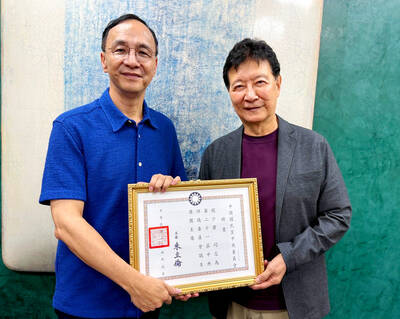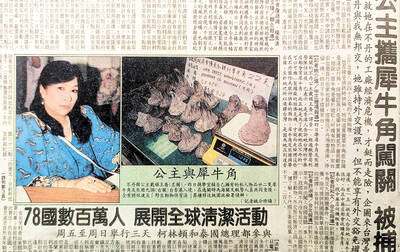Even now, lounging around her apartment at the age of 62, wearing Mephisto slippers and a far-from-revealing hoodie, Linda Ronstadt is thinking back to a summer in Guadalajara when she was 12, and a light-haired Mexican boy named Mario.
“I would flirt with him,” she recalls wryly, her come-hither eyes and heart-shaped lips still echoing the days when she was decreed Rock’s Venus by Rolling Stone. “One night I heard music and ran to the window. I peeked through the curtain, and there was Mario with two taxis full of mariachis serenading me with firecrackers.”
To Ronstadt, whose roots are deeply embedded in Mexican soil, it was the ultimate seduction. “These are big-voiced songs, filled with the exuberance of nature, the fertility of the earth, love and romance,” she says of mariachi music, the focus of much of her artistic passion since she abdicated the throne of rock Venus-dom in the early 1980s. “They’re about growing the land, and romance blooming in that context. The songs are more complex sexually, I think, than the romantic love we grew up on.”
A mistress of self-reinvention who likens her resolve to “a Mexican crossed with a Sherman tank,” Ronstadt’s post-Heart Like a Wheel career has included pop standards with Nelson Riddle, Gilbert & Sullivan’s Pirates of Penzance onstage for Joseph Papp (she was nominated for a Tony), twangy Appalachia (with Dolly Parton and Emmylou Harris), French Cajun (her recent Adieu False Heart with Ann Savoy) and of course, with Canciones de Mi Padre, mariachi — which reconnected her to her Tucson, Arizona, childhood as the granddaughter of a German-Mexican mining engineer and rancher whose mariachi band serenaded the populace from a now-defunct bandstand in the city’s central plaza.
Today Ronstadt, whose zeal for eclecticism extends to her decor — a cross between the Hubbell Trading Post in Arizona and Mario Buatta — is transforming herself again, this time as the consulting artistic and educational director of the Mexican Heritage Plaza’s 17th Annual International Mariachi and Latin Music Festival in San Jose, California. Next Saturday, she will perform there with artists like Lila Downs and Aida Cuevas as part of a tribute to three dead mariachi divas, including her own musical heroine, Lola Beltran.
The event, which runs through Sept. 28, is one of dozens of mariachi festivals and conferences that have flourished around the country since the San Antonio International Mariachi Conference was founded in 1979. Since then the festivals have become a Latino cultural phenomenon, drawing thousands of fans annually to places like Tucson; Albuquerque; Fresno, California; Wenatchee, Washington; and the Hollywood Bowl. Most notably they have become a mecca for young Mexican-American musicians dressed in trajes de charro, traditional spangled outfits with butterfly-shaped ties and sombreros, who come for hands-on workshops with celebrity masters like Nati Cano and Randy and Steve Carrillo of Mariachi Cobre. For young mariachis it is the equivalent of studying guitar with Keith Richards and vocals with Mick Jagger.
“There’s a totally different energy exchanged,” Ronstadt says of the mariachi scene, which draws entire extended families, as opposed to single-generation rock audiences. “There’s not some drunk yelling out Heat Wave when you were singing Heart Like a Wheel.”
Though its precise origins are sketchy, mariachi emerged in northwestern Mexican state of Jalisco in the late 19th century, sung by musicians who traveled from village to village for saints days and fiestas. During the Mexican revolution mariachi soldiers played corridas to Pancho Villa and other heroes; afterward the rousing melodies incorporating indigenous rhythms became a patriotic symbol of Mexican nationhood.
Despite its prominence, including the “singing charro” movies and radio broadcasts of the 1930s, the genre was viewed as slightly declasse, its musicians as “human jukeboxes regurgitating whatever tune the customer requested,” in the words of Daniel Sheehy, acting director of the Smithsonian Latino Center and director of Smithsonian Folkways Recordings.
It was in America, unexpectedly perhaps, that the image began to change. Almost 30 years ago the San Antonio conference, spawned by the Chicano movement, helped legitimize the musicians as marquee performers and inspire inclusion of mariachi in national music education. Today some 500 public schools offer mariachi classes along with choir and orchestra.
“It was a cultural and educational breakthrough, putting a new frame around an old music and Mexican culture on the main stage of American society,” Sheehy said.
Ronstadt used her stardom to raise the profile of Mexican music. Canciones de Mi Padre, released in 1987 and her first album of traditional mariachi music, became the biggest selling non-English album in US history at the time, with sales of more than 2 million copies. The next year it was adapted for a Broadway show, in which she appeared in full Mexican costume, complete with fake braids.
“She put us on center stage,” said Cano, 75, a national heritage fellow who recently performed with the mezzo-soprano Suzanna Guzman and the Mexico City Philharmonic in Los Angeles. “After Linda mariachis became popular in concert halls, not just at the cantinas and the pinata parties.”
Through the music of her father and grandfather, Ronstadt seemed finally to inhabit herself, like Peter Pan finding his shadow. On the radio the soulful melodies of traditional mariachi ensembles still lie under the radar, though individual artists accompanied by mariachi bands, like Vicente Fernandez, regularly top the Latin charts. For many Mexican-Americans, mariachi remains the emotional sound track of daily life, performed at baptisms, weddings, birthday parties, funerals.

Next week, candidates will officially register to run for chair of the Chinese Nationalist Party (KMT). By the end of Friday, we will know who has registered for the Oct. 18 election. The number of declared candidates has been fluctuating daily. Some candidates registering may be disqualified, so the final list may be in flux for weeks. The list of likely candidates ranges from deep blue to deeper blue to deepest blue, bordering on red (pro-Chinese Communist Party, CCP). Unless current Chairman Eric Chu (朱立倫) can be convinced to run for re-election, the party looks likely to shift towards more hardline

Sept. 15 to Sept. 21 A Bhutanese princess caught at Taoyuan Airport with 22 rhino horns — worth about NT$31 million today — might have been just another curious front-page story. But the Sept. 17, 1993 incident came at a sensitive moment. Taiwan, dubbed “Die-wan” by the British conservationist group Environmental Investigation Agency (EIA), was under international fire for being a major hub for rhino horn. Just 10 days earlier, US secretary of the interior Bruce Babbitt had recommended sanctions against Taiwan for its “failure to end its participation in rhinoceros horn trade.” Even though Taiwan had restricted imports since 1985 and enacted

Last week the story of the giant illegal crater dug in Kaohsiung’s Meinong District (美濃) emerged into the public consciousness. The site was used for sand and gravel extraction, and then filled with construction waste. Locals referred to it sardonically as the “Meinong Grand Canyon,” according to media reports, because it was 2 hectares in length and 10 meters deep. The land involved included both state-owned and local farm land. Local media said that the site had generated NT$300 million in profits, against fines of a few million and the loss of some excavators. OFFICIAL CORRUPTION? The site had been seized

Enter the Dragon 13 will bring Taiwan’s first taste of Dirty Boxing Sunday at Taipei Gymnasium, one highlight of a mixed-rules card blending new formats with traditional MMA. The undercard starts at 10:30am, with the main card beginning at 4pm. Tickets are NT$1,200. Dirty Boxing is a US-born ruleset popularized by fighters Mike Perry and Jon Jones as an alternative to boxing. The format has gained traction overseas, with its inaugural championship streamed free to millions on YouTube, Facebook and Instagram. Taiwan’s version allows punches and elbows with clinch striking, but bans kicks, knees and takedowns. The rules are stricter than the